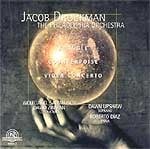3(II=picc,III=afl).2.corA.2.bcl.2-4.3.3.1-timp.perc(3):medium cym/timbales/conga/large tamt-t/vib; sizzle cym/large cym/cowbell/tamb/conga/vibraslap/glsp/marimba; small cym/tgl/maracas/tom-t/sleighbells/BD/medium tam-t/chimes-harp-pft-strings
Abbreviations (PDF)
Boosey & Hawkes
Brangle is concerend with dance: the rhythms and physicality of kinetic energy. The dances range from the first-hand reality of experience through the second-hand reality of cultural memory to the purely imagined.
The first movement is based on the rhythms of eastern Mediterranean folk dance for men. The second movement deals with the Hispanic-American rhythms, flipping a four-note motive from the perfumed world of Ravel, Albeinz and Falla to the late 20th century and back. The third movement, which was composed first as That Quickening Pulse, is an imagined feminine dance of acceleration.
In 15th century France the Branle (Bransle) was one of the steps of the courtly Basse Dance. In the 16th century it was an independent popular dance. In England the dance was known as Brangle, (Brangill) or Brawl.
"MOTH: Master, will you win your love with a French Brawl?
ARMADO: How meanest thou? Brawling in French?
MOTH: No, my complete master, but to jig off a tune at the tongue's end, canary to it with your feet, humor it with turning up your eyelids, sigh a note and sing a note-"
Lover's Labour's Lost (III, I) William Shakespeare
Jacob Druckman

